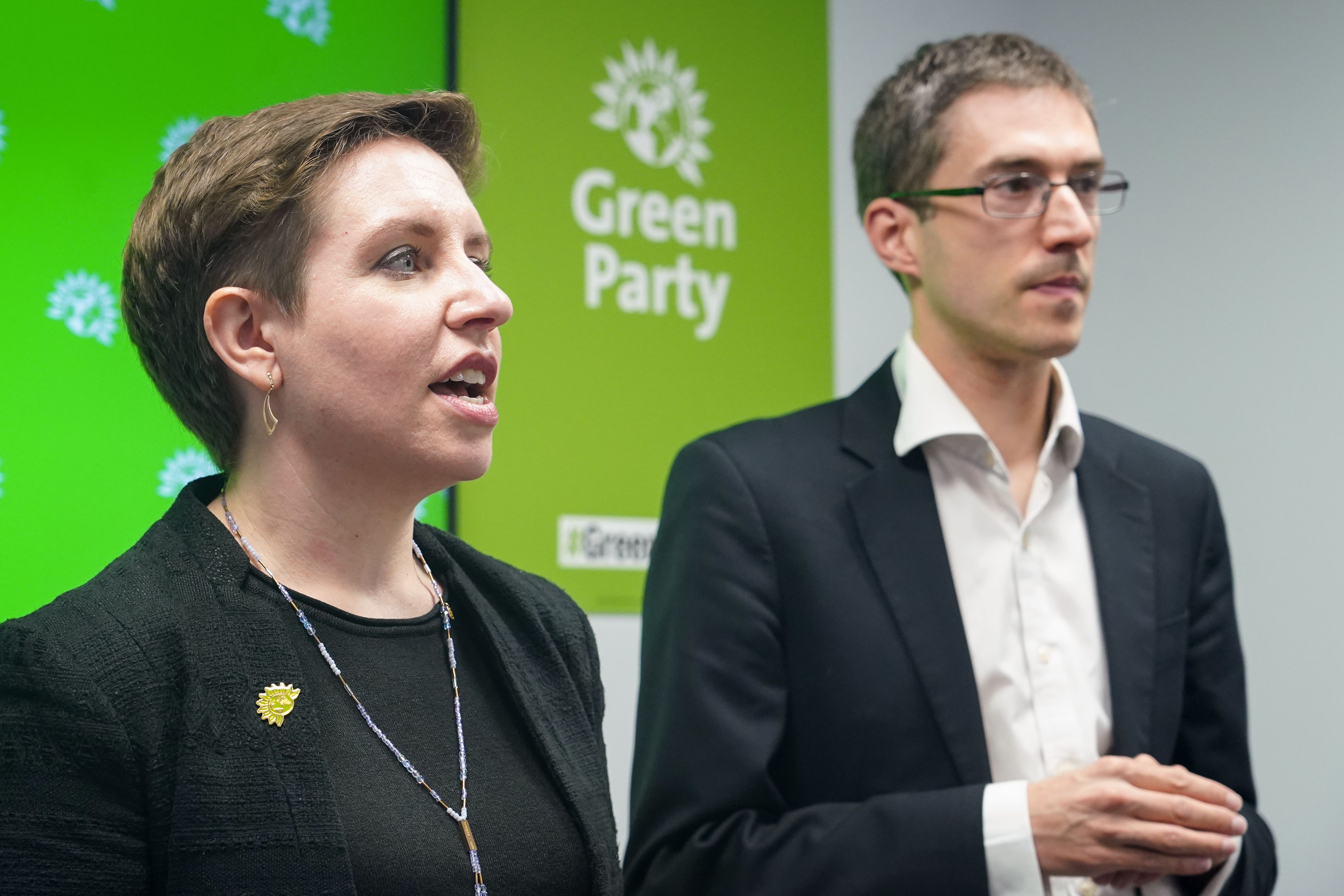Could this be a breakthrough election for the Green Party?
2024 could be their best year yet, says Sean O’Grady... but don’t expect a string of new MPs


Voters in almost every constituency in Britain will be able to vote for a Green candidate at the next election for the first time. After a period of steady progress in local elections, the party is to field candidates right across England and Wales, throughout Northern Ireland, and in about half of the seats in Scotland.
The move will boost their national profile and vote share, and allows them to fully capitalise on anger at the government’s pollution of waterways and Labour’s move to the centre ground (as well as Keir Starmer’s stance on the Israel-Hamas war). But as ever, some still worry that a Green vote is a wasted vote...
How are the Greens doing?
2024 could be their best year yet in a British general election. They are polling at a steady 5 per cent or so; remain in a sort-of coalition government in Scotland; have representation in the Welsh Senedd and the Greater London Assembly; and have 766 councillors across England and Wales. They are now in control in Mid Suffolk, and share power in Oxfordshire, Basingstoke and the Isle of Wight, among other places.
Their modest vote in by-elections during this parliament has mostly seen off the challenge of tactical voting, suggesting that their core supporters are a rather principled lot. Over the past decade or so they’ve benefited from the decline of the Liberal Democrats as the traditional repository for protest votes.
What does the Green Party hope for at the next election?
Two or three parliamentary seats. They obviously hope to hang on to Brighton Pavilion, where former leader Caroline Lucas is retiring after some 27 years in the Commons. Co-leaders Carla Denyer and Adrian Ramsay have hopes of winning Bristol Central (currently held comfortably by Labour’s Thangam Debbonaire) and Waveney Valley in Suffolk (a redrawn constituency, and nominally Tory).
How will the Green Party do?
Sian Berry, a prominent Green politician, hopes to inherit Lucas’s support base in Brighton, but she faces some dissatisfaction with the performance of the local Green council, and Lucas’s profile means that the incumbent has carried something of a personal vote. However, it would take a very substantial swing indeed for Labour to take the seat, and the assumption must be that, as Starmer has edged towards the centre, the Greens will be able to retain the backing of Red-Green voters.
By contrast, Denyer and Ramsay would be lucky to win their seats, and would count any progress towards turning either of them into a Green marginal as a remarkable success.
Thus, the Greens might score their biggest national success since the European parliament elections of 1989 (when they won a freakish 14.9 per cent of the vote), yet be rewarded with perhaps one seat in the Commons.
Financially, they will also surely be hoping to save as many deposits as possible – at £500 a go, a poor showing would cost them dear.
What do the Greens stand for?
Here is a political party that proudly boasts of a formal “philosophical basis”. It is as follows: “A system based on inequality and exploitation is threatening the future of the planet on which we depend, and encouraging reckless and environmentally damaging consumerism. A world based on cooperation and democracy would prioritise the many, not the few, and would not risk the planet’s future with environmental destruction and unsustainable consumption.”
Are their policies mainstream?
Greens might say that there’s nothing so extreme or “mad” as ignoring the climate crisis. As they put it so vividly:
“Only after the last tree has been cut down,
Only after the last river has been poisoned,
Only after the last fish has been caught,
Only then will you find that money cannot be eaten.”
On the other hand, some individual policies might still require effort in order to persuade the average voter. For example, Lucas has advocated taking only one flight per year for holidays, and the party has adopted a highly liberal policy on drugs. Indeed, it goes so far as to propose “cannabis social clubs” as part of a “public health approach” to harms:
“Cannabis Social Club is a community-based, non-profit model that can form an integral part of a legally regulated cannabis market. Clubs can cultivate and consume their own cannabis and cannabis products within a regulated membership-based not-for-profit cooperative. Furthermore, they act as a gathering place for recreational consumers and patients using medicinal cannabis as well as a place of information exchange, advice on safer cannabis use, harm reduction and education.”
Let’s hope the party doesn’t get too high on success.






Join our commenting forum
Join thought-provoking conversations, follow other Independent readers and see their replies
Comments